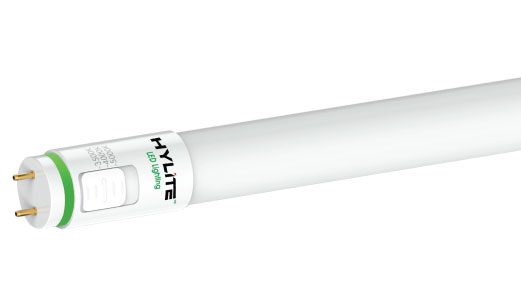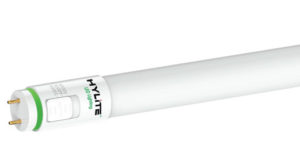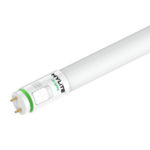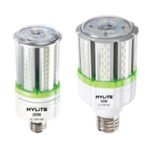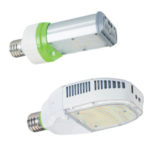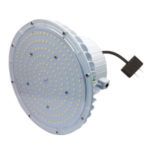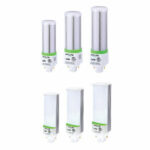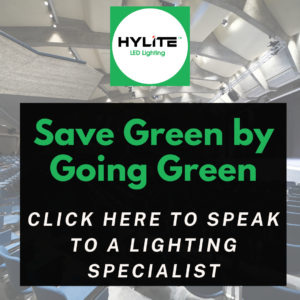Why Switch to Energy-Efficient LED Tube Lights
The Benefits of Switching to Energy-Efficient LED Tube Lights
If you’re still harboring doubts about the superiority of LED lighting over fluorescents, then we’re here to put them to rest for good.
Typically found in offices and other commercial settings, LED tube lights outperform fluorescent tube lights across every category. That’s because LED lights feature higher light output (lumens) relative to their energy consumption, converting 95% of their consumed energy into light.
In addition to their unmatched energy efficiency, LEDs offer enhanced control over color temperature, color rendering, and dimmability, enabling users to customize the light to their liking.
Let’s take a minute to explore why you should retrofit your space with LED tube lighting.
LED Tube Lights Reduce Your Energy Bills
Lighting represents a significant percentage of annual U.S. residential and commercial energy consumption, accounting for 15% and 17%, respectively.
This sizable energy consumption makes lighting an ideal starting point for implementing energy efficiency upgrades to save big on utility bills.

Regarding saving on energy costs, there are two primary factors to consider.
The first factor is the potential cost savings from reducing energy consumption while maintaining the same usage levels. While there are countless savings calculators to determine the potential lighting savings for your home or business, the general rule of thumb is that LEDs save approximately $6/year per bulb, assuming three hours of operation per day compared to incandescent equivalents.
Those energy savings start to add up quickly, considering the average North Carolina household contains between 60 and 70 light bulbs.
And given their expansive and expensive lighting schemes, commercial facilities and office buildings stand to save even more. For instance, many older buildings still have outdated incandescent and fluorescent tube lights installed, throwing away thousands in annual energy savings.
Bulb replacement costs are the second factor to consider when assessing lighting energy savings.
LEDs outperform the competition when installed and in use, and their lifespan also outlasts every other bulb on the market by massive margins.
Incandescents last for 1,200 hours on average before needing replacement, whereas LEDs last anywhere from 50,000 to 100,000 hours – a staggering improvement that’s impossible to ignore.
So, LEDs save money on utility bills and help to avoid trips to the hardware store.
Compare and Contrast: LED Tube Lights vs. Fluorescent Tube Lights
This table provides an overview of the key differences between LED and fluorescent tube lights.
As you can see, fluorescent tubes can’t match up with LEDs in any category. The steep initial costs are the only reason businesses drag their feet when retrofitting their LED lighting.
Even though fluorescent tube lights are much cheaper than LEDs out of the box, the energy and maintenance savings incurred over the lifetime of LED tubes more than make up for it.
| LED Tubes | Fluorescent Tubes |
| Plastic, aluminum, and electronic components | Metal and glass components; contains mercury. |
| Instant light | Warm-up period |
| Smooth, consistent light quality | Prone to flickering and buzzing |
| 50,000+ hour lifespan | 1,200 – 6,000 hour lifespan |
| Durable | Breakable |
| Cool to the touch | Emit excess heat |
| Minimal maintenance and bulb changes | Constant maintenance and bulb changes |
| Wide color spectrum | Narrow color spectrum |
Color Rendering and Temperature
Color rendering and color temperature are two qualitative aspects of lighting that often go overlooked. Color rendering refers to how light sources make the colors of an object appear and how accurately the shades of those colors appear. Coloring rendering is measured on an index (CRI) from 0 to 100, with LEDs typically scoring above 90.
Color temperature refers to the appearance, or color, of the light itself and is measured in Kelvin (1,000 – 10,000). The three most popular color temperatures are warm light, cool light, and daylight. LEDs can have a much more comprehensive range of color temperatures than incandescents, which lean towards the warmer side of the color spectrum.
Seamless Transitions
LED tube lights don’t often need new fixtures or extensive re-wiring, as they can fit into pre-existing incandescent fixtures. This saves time and money, giving businesses yet another reason to retrofit their lighting schemes with LEDs.

Advanced Energy-Saving Measures
Switching over to LED tube lights opens up a multitude of advanced energy-saving measures, including lighting adjustments based on real-time occupancy, daylight dimming, peak scheduling, and demand response strategies.
In conclusion, switching to energy-efficient LED tube lights is a smart investment for both residential and commercial settings. The benefits are clear – reduced energy bills, longer lifespan, customizable lighting, and a reduced environmental impact. With the advantages of LED lighting, now is the time to upgrade your lighting system.
At HyLite LED Lighting, we specialize in providing energy-efficient LED lighting solutions to suit any need. Our team of experts can help you create a more sustainable and cost-effective lighting system from retrofitting existing fixtures to designing new lighting schemes.
Don’t wait to make the switch – contact HyLite LED Lighting today to learn more about how we can help you improve your lighting system and maximize your energy savings.

